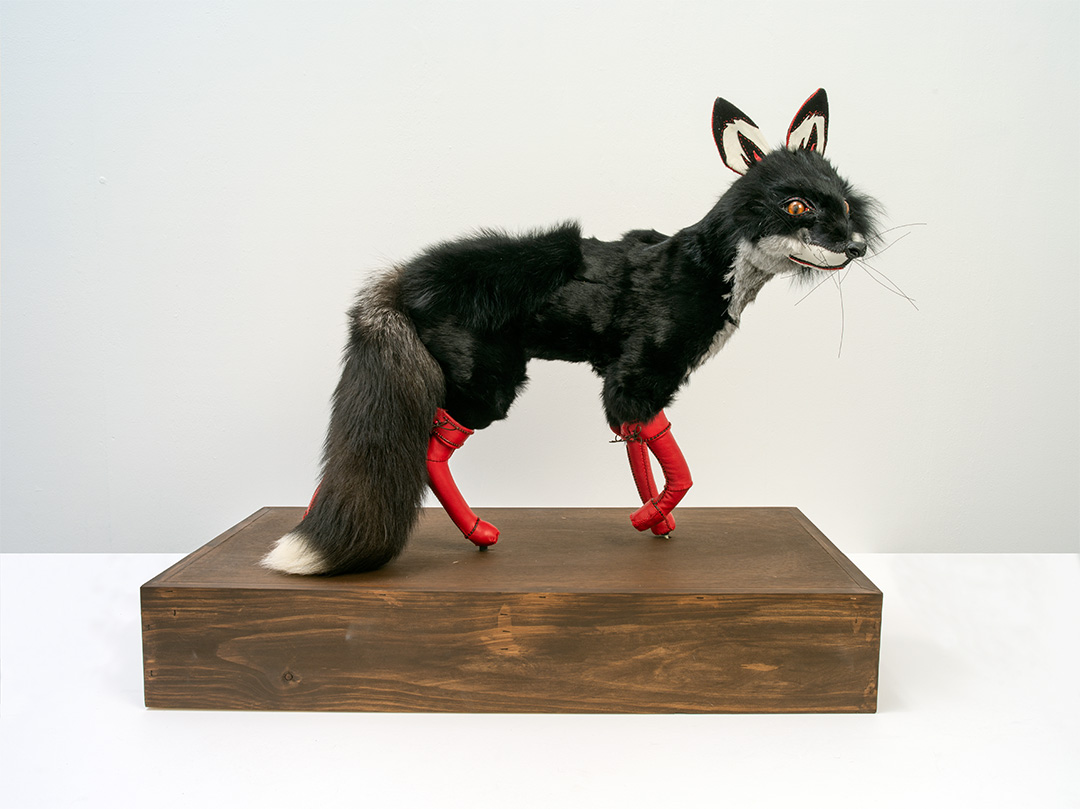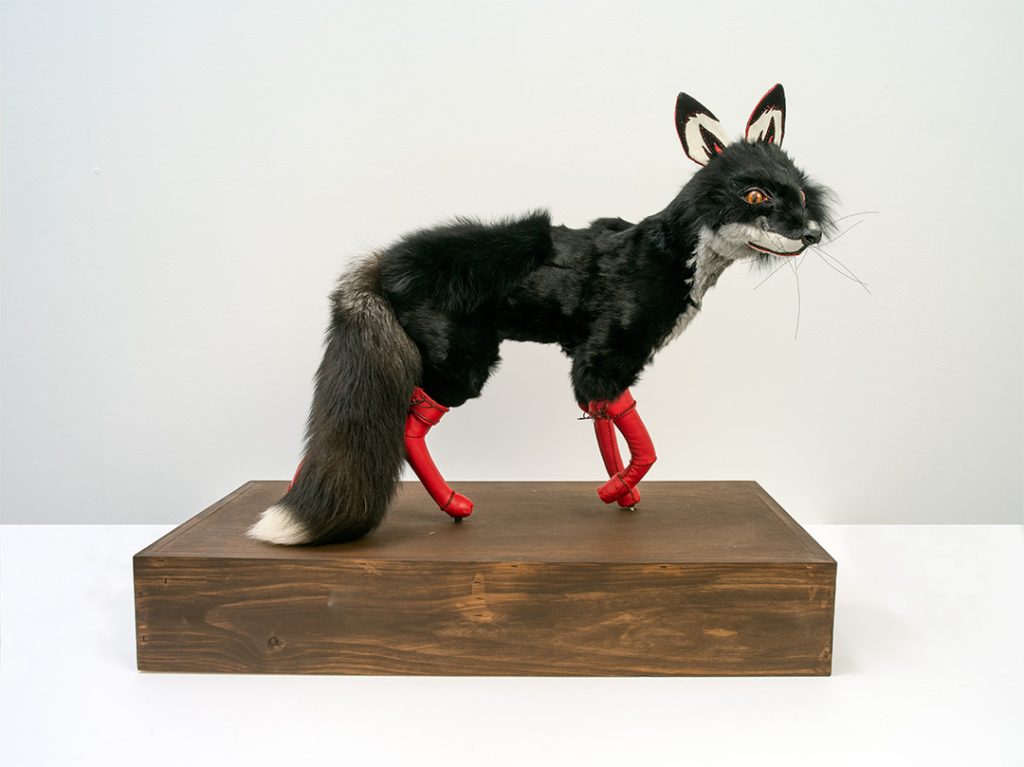By Dr Beata Batorowicz
As a Polish-born Australian artist, I draw on symbolically-charged narratives, such as fairy tales and folklore, to highlight the power of sub textual stories in subverting grand narratives of art history. My artworks apply personal stories to create slippages and other spaces, which offer a rich complexity of cultural tales that can be retold and experienced. My use of personal mythologies in critiquing established art narrative tropes have been further honed and ritualised through working at a regional university.
Engaging in practice-led research as an artist-academic at the University of Southern Queensland (USQ), I came to identify synergies between my use of personal art tales and working in a regional university, in that they both operate from the periphery. On one hand, they are both side-lined from global art debates and given less exposure within key industry avenues. As it is widely acknowledged that regional Australian artists have less access to professional opportunities than colleagues based in metropolitan areas, regional artists have increasingly negative perceptions about the impact of their location on their practice. They also earn almost a third less than their city counterparts for creative work (Australia Council, The Arts in Regional Australia: A Research Summary, 2017). On the other hand, personal tales and regional spaces can work the periphery well. They hold their own agency that asserts a ‘peripheral power’ in which dominant narratives are unable to exercise (Palmer and Batorowicz Under Review).

Artwork from Dark Rituals Exhibition, USC Art Gallery: Beata Batorowicz Black Fox with Red Leather Boots, 2018. Fur, leather and wood, Dimensions: 70 x 83.5 x 44 cm (With permission of the artist, Photo: Carl Warner).
For regional artist-academics, building connections with industry and new audiences is challenging. The ability to work well from the periphery as a regional artist lies in what I describe as a creative ritual of ‘seeing around corners.’ This ritual involves perceiving limitations, whether it be artistic or institutional constraints, not as dead-end routes, but as reminders to look slantwise; to be attuned to uncovering potential pathways that lie in our peripheral vision. As such, turning corners in academia has become my ritual in forging practice-led projects that develop cross-university collaborations for regional artists.
A most recent example is my project Dark Rituals and Magical Relics: From the Little Art Spell Book (2018) in lead collaboration with Megan Williams, Director of University of Sunshine Coast Art Gallery, as well as University of Saskatchewan, Canada, University of Tasmania, Launceston and USQ. The project takes form of an internationally-touring exhibition of renowned artists such as Lisa Reihana (New Zealand), Amalie Atkins (Canada), Susan Shantz (Canada), Margaret Baguley (USQ), two of my Doctor of Creative Arts students, Linda Clark, Ellie Coleman (USQ) and myself. For the Australian artists, the involvement of international artists in the project means their work is positioned within global art conversations.
Thematically, the project examines personal and cultural mythologies as rites of passage inherent in the practices of contemporary women artists in academia. Blurring art and life, fact and fiction, women artists often ritualise their practice as a means of reclaiming the culturally-gendered spaces in art and education (Battersby 1989; Horne & Perry 2017). The project is supported by Australia Council for the Arts (2018) and offers a model in connecting regional artists internationally.
Through focussing on regional exchange, nationally and internationally, this ritualised approach values the work being made by artists in regional Australia and shows that collaboration among artists can cultivate professional networks and creative opportunities for cultural exchange. I utilise these partnerships as strategic pathways in increasing the regional presence as a centre for practice-led research.
In short, these outcomes not only extend beyond the regional space and narrative, but directly contribute to it. For instance, as a result of the high-calibre practice-led outcomes for junior and senior research collaborators, this has allowed for me to undertake a leading role in the implementation of the USQ Doctor of Creative Arts Program (DCA) in 2016. The program has currently attracted local, national and international researchers in Creative Writing, Visual Arts, Theatre, Music and Film. In charting the emerging identity of the DCA program within its regional setting, I ritually tap into the developed network of partnerships to new candidates as part of their practice-led research experience of ‘seeing around corners.’ This ritualised practice in expanding regional university programs and research partnerships, exemplifies creative resiliency in its local and international reach.
References
Australia Council for the Arts (2017) The Arts in Regional Australia: A Research Summary, Sydney, Retrieved From: http://www.australiacouncil.gov.au/research/regional-arts-summary/
Battersby, C. (1989) Gender and Genius: Towards a Feminist Aesthetics, Bloomington and Indianapolis.
Horne, V. & Perry, L. (eds) (2017) Feminism and Art History Now, Radical Critiques of Theory and Practice, I.B. Tauris, London.
Palmer, J. & Batorowicz, B. (2018) ‘Peripheral Power: Little Stories to Unsettle the Present,’ Text & Performance Quarterly (in submission).
Dr Beata Batorowicz is a Senior Lecturer in Sculpture and Creative Arts Coordinator at the University of Southern Queensland. She is a contemporary artist with substantial cross-university practice-led research experience in the arts. Her projects like Dark Rituals (2018), Antipods (2015), Tales Within Historical Spaces (2012) have secured key funding including Australia Council for the Arts (2018) and Social Sciences and Humanities Research (2015) and Arts Queensland (2011). Batorowicz has published in Arts and Humanities in Higher Education (2018) and Australian Art Education (2017) and is also a recipient of an USQ Citation for Outstanding Contributions to Student Learning (2016).
